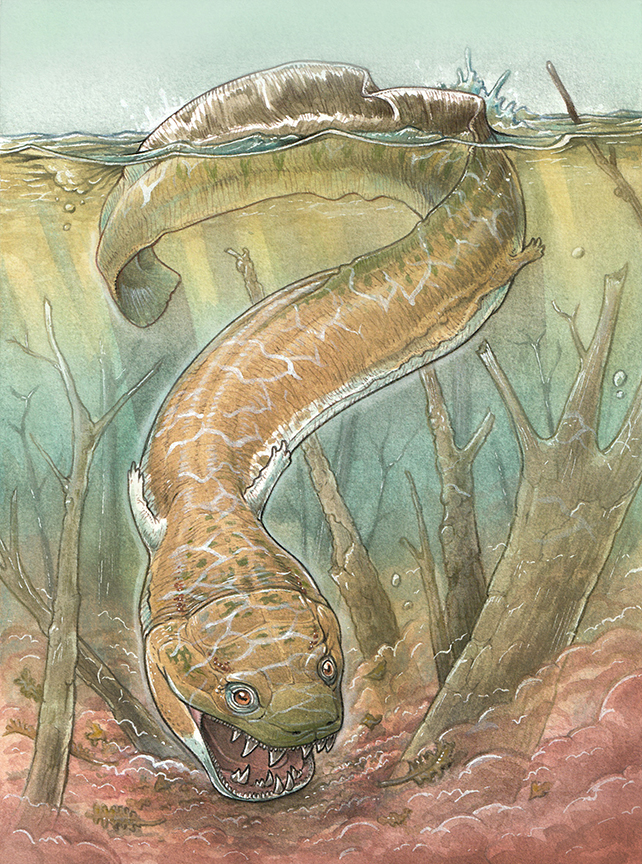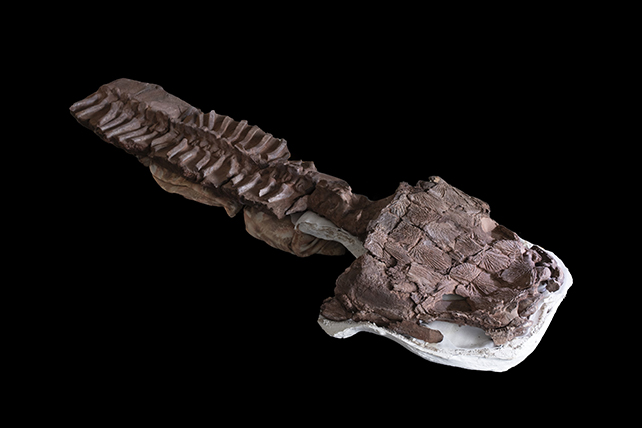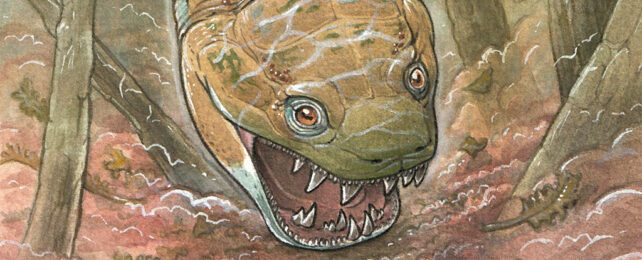File under ferocious predators we wouldn't want to meet during a swim on ancient Earth: the newly discovered Gaiasia jennyae was a large-fanged, salamander-like swamp creature with a skull around 60 centimeters (24 inches) long, researchers have revealed.
As outlined in a new study by an international team of experts, G. jennyae lived around 280 million years ago during the early Permian, a whole 40 million years before dinosaurs arrived on the scene.
Fragments of fossilized skeletons representing four specimens were found in the Gai-As Formation in Namibia.
"When we found this enormous specimen just lying on the outcrop as a giant concretion, it was really shocking," says vertebrate paleontologist Claudia Marsicano of the University of Buenos Aires in Argentina.
"I knew just from seeing it that it was something completely different. We were all very excited."
Gaiasia jennyae is named for both the location of its discovery and the late Jenny Clack, a much respected paleontologist who specialized in the evolution of early tetrapods (four-limbed vertebrates, a category G. jennyae falls into).

"Gaiasia jennyae was considerably larger than a person, and it probably hung out near the bottom of swamps and lakes," says Jason Pardo, a paleontologist at the Field Museum of Natural History in Chicago.
Pardo then describes the creature in a way that probably won't reduce our chances of having nightmares about it: "It's got a big, flat, toilet seat-shaped head, which allows it to open its mouth and suck in prey. It has these huge fangs, the whole front of the mouth is just giant teeth."
On a slightly more reassuring note, G. jennyae was most likely relatively slow-moving, relying on ambushes rather than sheer speed, so if you had come across one, you might've stood a chance at escaping its clutches.

"The structure of the front of the skull caught my attention," Marsicano says. "It was the only clearly visible part at that time, and it showed very unusually interlocking large fangs, creating a unique bite for early tetrapods."
The skull size of G. jennyae is much larger than that of related fossils found in Europe and North America.
Researchers think that the new species could connect some of the dots in the fossil record, and there are indications that early tetrapods like this one may have covered more of the planet than previously thought.
Namibia is just northwest of South Africa today but was even further south 300 million years ago – touching Antarctica. As an ice age was drawing to a close, swamps like the ones G. jennyae inhabited were possibly existing alongside stretches of ice and glaciers.
"It tells us that what was happening in the far south was very different from what was happening at the equator," says Pardo.
"That's really important because there were a lot of groups of animals that appeared at this time that we don't really know where they came from."
As well as its size and its large interlocking fangs, what makes this creature so notable is its connections to even more ancient beasts back through time – connections that were still evident in G. jennyae even while other similar species in warmer climes were evolving into something new.
"There are some other more archaic animals still hanging on 300 million years ago, but they were rare, they were small, and they were doing their own thing," says Pardo.
"Gaiasia is big, and it is abundant, and it seems to be the primary predator in its ecosystem."
The research has been published in Nature.
